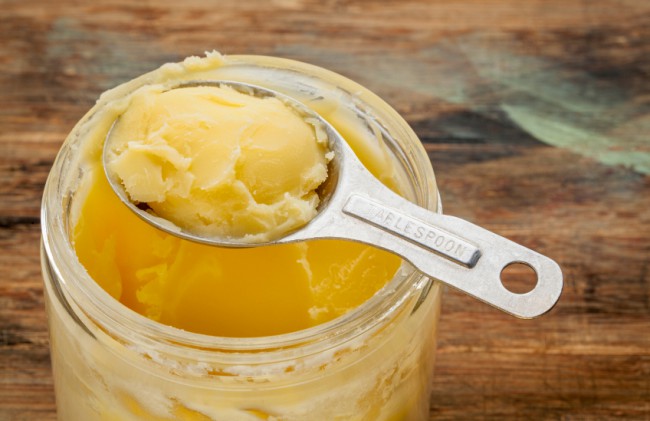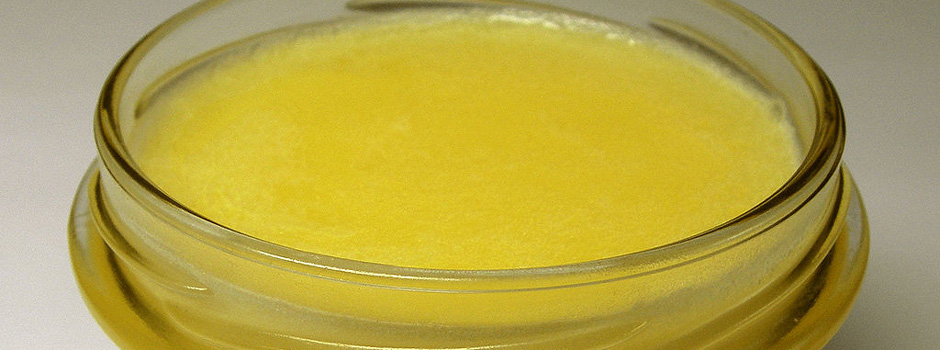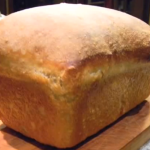
Ghee butter got its start in Asia ages ago as a way to preserve butter for long term use. It can be stored without the need for refrigeration, and some ghee products are purported to have a shelf life of more than a hundred years. While there is a lot of disagreement over actual shelf life, and many factors contribute to how long ghee can be preserved, it is definitely something is arguably useful and safe for at least a couple of years if processed properly.

Making Ghee Butter
Making ghee butter is ridiculously easy, but it requires a little bit of experience and culinary instincts as well. It’s very important that you always start out with quality butter that does not contain any salt or other additives. We want to get rid of all of the impurities in the butter in order to make a refined and lasting finished product. Even certain types of plain butter can vary in quality. Keep in mind that the refining process will separate the pure butter from everything else. Butter products that contain a lot of water or other impurities will reduce the amount of ghee that can be harvested. Skimping now by using low quality butter may end up costing you more money in the long run. Get the good stuff.
Take two pounds of butter and cut them into cubes that are around a couple of inches thick. Place into a saucepan or skillet over very low heat. Evenly distribute the butter as it melts and keep an eye for burning. The pure butter will start to sink to the bottom of the pan while the water and impurities will either boil off, separate or leave a foamy residue. Chances are that all three things will happen as you cook down your butter.
Expect to heat the butter for about 30 minutes before it can be strained and cooled.
It’s very important that you keep an eye on the butter as it melts and separates. You don’t want to cook the butter. Cooking begins as the butter turns from an amber/yellow/golden color to darker shades and eventually brown. Keep temperatures low and stir frequently and slowly to ensure that the butter does not burn.
You also want to chose your pan wisely. While you can use any type of pot or pan, different materials conduct and radiate heat differently as well. One of the safest things you can do is to create a double boiler and this will prevent the butter from scorching in the pan. However, with a little bit of practice, you can figure out how to make the perfect ghee with any pan, just expect to make a few “mistakes” along the way.
Straining and Storing the Ghee
The next step is to strain the butter after you have heated it up for the allotted time. You can tell that it’s ready when any changes that occurred during the heating process have stopped or slowed considerably. You will understand as you watch what happens as the butter gets reduced. Remove from heat, let cool for about a minute and then pour through a wire strainer that has been lined with cheesecloth. Strain into the container that you will be using to store the butter.
Be patient as you wait for the process to unfold. Consider gently stirring the butter with a soft spatula from time to time, especially if there are a lot of impurities present, in order to keep the butter moving through the filter.
Allow the butter to cool for a few minutes in the container. Take a look and see if there are still a lot of impurities that have moved and coagulated on the top. You will know as the pure butter will form on the bottom with a distinct line that separates it from the impurities on the top. You may need to reheat the butter for a longer period of time if a lot of these impurities remain. You are aiming for a container that has nothing but refined butter. You can also allow the butter to cool and then scoop away the impurities as well.
You can either store the butter at room temperature or in a refrigerator. Just make sure that you are using sterilized, air-tight, containers for maximum shelf life. However, even with a normal container with a lid, you can easily get a year out of your ghee before it starts to lose quality in most cases. Keep in mind that anything from air quality and temperature, to impurities that enter the container can all influence how long ghee lasts.
However, following these simple steps can help to give you an exceptional and long-lasting supply of butter. Start practicing today so that you can get a feel for how to make the perfect ghee that can be used for years to come.














